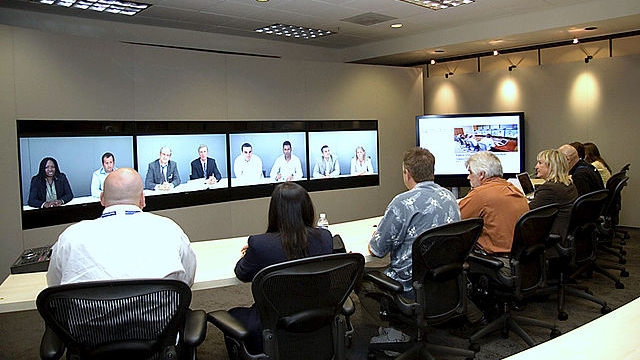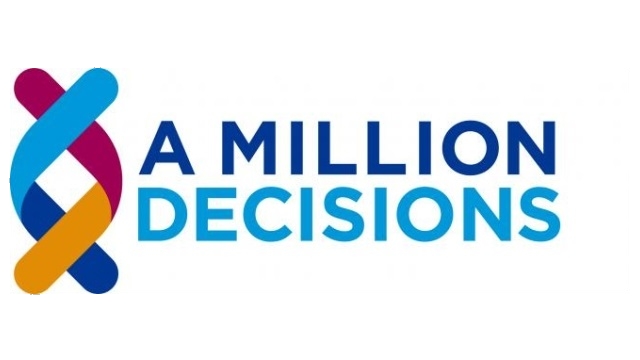
Creating synergistic interprofessional teams
A recent book chapter1 explores the tools, strategies, and methods used to create synergistic interprofessional teams. While aimed at the healthcare sector, and specifically the nursing profession, the chapter offers advice and insights that are likely to be useful to other sectors.
This article presents a summary of the key points from the chapter.
What is a synergistic interprofessional team?
An interprofessional or interdisciplinary team2 is “composed of members from different professions and occupations with varied and specialized knowledge, skills, and methods. The team members integrate their observations, bodies of expertise, and spheres of decision making to coordinate, collaborate, and communicate with one another in order to optimize care for a patient or group of patients.”
The synergy “experienced by members of teams is often described as growth derived from the relationships, feedback and insights gained from the experience. Attributes that contribute to the synergy emerge through the interactions of team members supported by active listening, contributing, motivation, and cognition.”
Fundamentals of teams
Teams vs groups
- Groups and teams have in common the gathering of individuals who will work together to accomplish goals.
- Group members have individual accountability to complete work; come together to share information; complete individual work or tasks based on their role; are focused on their own challenges and interests; and have a purpose or goals that are directed by a manager.
- Team members have individual and mutual accountability; come together for discussion, problem solving, and planning; focus on collective goals and work products; and have a purpose, work, and goals that are shaped by the leader in conjunction with the members.
Multidisciplinary vs interdisciplinary teams
- Interdisciplinary teams recognise the interdependence of members who come together to understand complex situations or solve complex problems that require the knowledge, skills, and abilities of diverse individuals who cannot be successful without one another. An understanding emerges of how the various members’ contributions could be woven together in a unique way to bring a new or different result.
- Multidisciplinary teams engage the knowledge, skills, and abilities of the members who work in parallel with distinct responsibilities to accomplish a shared goal.
- Interdisciplinary teams bring out synergy and new possibilities, whereas multidisciplinary teams reinforce consistency in defined disciplinary outcomes.
Team structures
- Committees, councils, task forces, and ad hoc teams represent common structures and language in healthcare organizations.
- Committees and councils may result from the expectations of regulators or governing boards and have defined responsibility and authority directed towards ongoing work.
- Task forces and ad hoc teams are often created to address an issue or need that has arisen, and their work is typically aimed at making recommendations and then disbanding (or transitioning into a newly created committee or council).
Rules of synergy and team building
Six rules of synergy and team building that are pivotal to interprofessional team effectiveness have been identified:
- Define a clear purpose. Team members must be clearly knowledgeable about why the team is coming together, and be able to articulate the goals, objective, and purpose of the team.
- Actively listen. Each team member must be focused on each individual and listen to what is being said. Active listening is not judgemental and means being attentive to the speaker and completely absorbed in what they are saying.
- Maintain honesty. Each team member must be objective in providing feedback to the speaker. No one should make the speaker feel belittled or suggest that their view is not correct or important.
- Demonstrate compassion. Each team member should listen in a caring manner to the viewpoints of others.
- Commit to resolution of conflicts. Each team member must agree to disagree when their view or opinion is not the same as that of other members. Team members must work towards a common understanding and acceptance of the issue at hand.
- Be flexible. Each team member must be open and flexible to the perspectives of other individuals. Everyone must work together to accomplish the goal or objective.
Developmental stages for teams
Tuckman’s model of the stages of group development is useful for understanding team dynamics over time:
- Forming. During this orientation phase, members define interpersonal boundaries and task behaviours.
- Storming. Members resist group influence or task requirements, such that this phase is characterized by interpersonal conflict.
- Norming. Resistance declines and cohesion emerges as expectations and roles are accepted. Members feel free to share thoughts and ideas.
- Performing. Members are productive and work for the common goal of the group. Interpersonal relations drive activities and results.
- Adjourning. The team dissolves because the tasks have been completed and the goals achieved.
While the process is described here as a series of sequential phases, team formation is not always linear. Phases may be repeated, interrupted, or skipped.
Overcoming barriers to effectiveness in teams
Barriers to the effectiveness of teams and ways of overcoming them include:
- Inability to trust or rely on other team members. This can be overcome by the program planner or project manager assisting the development of trusting relationships by demonstrating how they are needed to overcome limitations in regard to the knowledge, skills, or abilities of individual team members.
- Fear and unresolved conflict. This requires team leaders to support constructive debates and demonstrate the ability to manage these negative emotions by establishing group norms for dealing with issues in a manner that is respectful to all team members.
- Lack of commitment. This is likely to be resolved through the inclusion of all points of view in the decision-making process.
- Lack of accountability. This can be countered by assisting the team to focus on goals, continually tracking team progress, and communicating frequently with the team through meetings and status reports.
- Inattention to the results of the team. This can be minimized through the selection of measures that clearly define success for the team effort (not individual interests) and the development of tracking mechanisms to monitor team progress. Successes and failures must be equally shared within the team and used to reinforce progress towards goals.
Strategies for work management
Deliberate and distinct strategies to improve communication, define accountability, and establish routines in healthcare have been a focus in recent years. These strategies include TeamSTEPPS, brainstorming, nominal voting, and SBAR communication:
- TeamSTEPPS is an evidence-based teamwork model that was developed to describe necessary skills and behaviours for team outcomes.
- Brainstorming generates a large number of ideas directed towards team goals. Essential rules are that everyone participates and that no discussion, critique, or evaluation of the ideas takes place during the session.
- The nominal group process begins with a stated objective, with each member writing their own list of possible solutions which are then shared with the group. As with brainstorming, ideas are not discussed until all have been presented.
- SBAR communication (situation, background, assessment, recommendations) aims to improve communication by establishing a structure that supports critical thinking, setting expectations for consistency in informational elements.
Leading change
Synergy and creativity
While the essence of program or project management is a systematic and disciplined approach to leading people through change and the completion of tasks, it also provides the opportunity to bring new ideas, relationships, and enthusiasm to an organization.
Appreciative inquiry, coupled with project management skills and quality improvement structures, can move teams from transactional interactions to transformational results.
Appreciative inquiry
By focusing on what is working rather than what’s not, appreciative inquiry guides us to greater acknowledgement and preservation of those things that are functioning as desired.
Transformational leadership
Underlying the success of appreciative inquiry are strong leaders with clarity, vision, and the ability to influence the thinking of others—in other words, transformational leaders.
Transformational leaders motivate followers to perform beyond normal expectations by reshaping their thoughts and attitudes and by enlisting vital support of the vision while striving for its fulfillment.
Innovation
The challenge for the interprofessional team is not how to generate new ideas and opportunities. but rather how to make innovation a deeply entrenched aptitude and competency in any project endeavor.
References:
- Thomas, P.L. (2015). Synergistic Interprofessional Teams: Essential Drivers of Patient-Centered Care. Thomas, T., & Dearman, C. Project Planning & Management: A Guide for Nurses and Interprofessional Teams. Jones & Bartlett Publishers. ↩
- Institute of Medicine (US) Committee on the Health Professions Education Summit; Greiner, A.C., & Knebel, E., editors (2003). Chapter 3, The Core Competencies Needed for Health Care Professionals. Health Professions Education: A Bridge to Quality. Washington (DC): National Academies Press (US). ↩
Also published on Medium.





